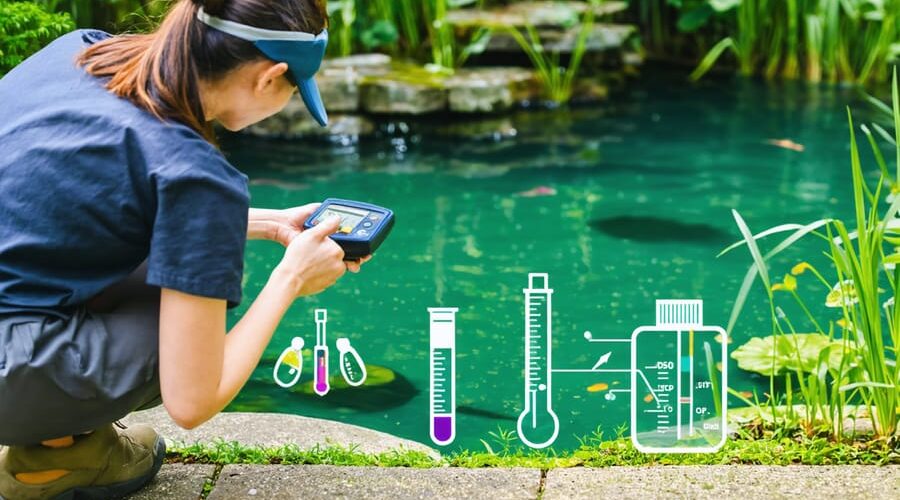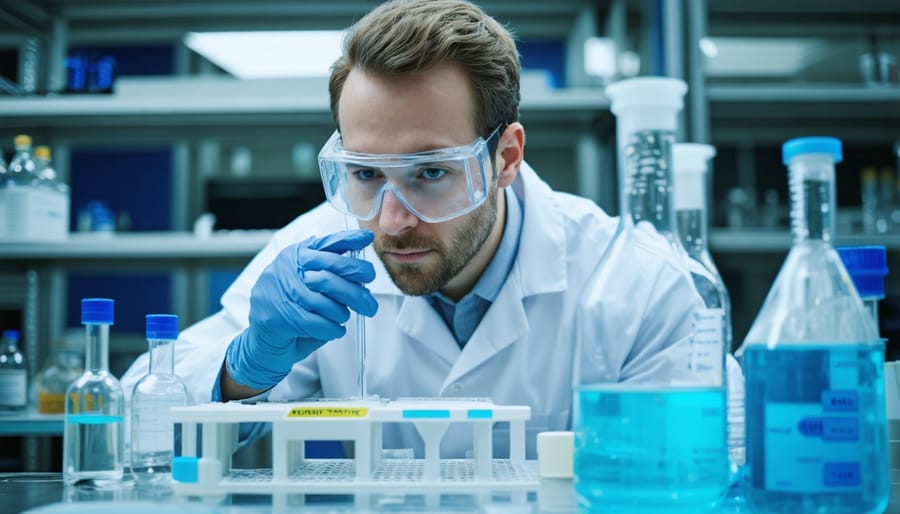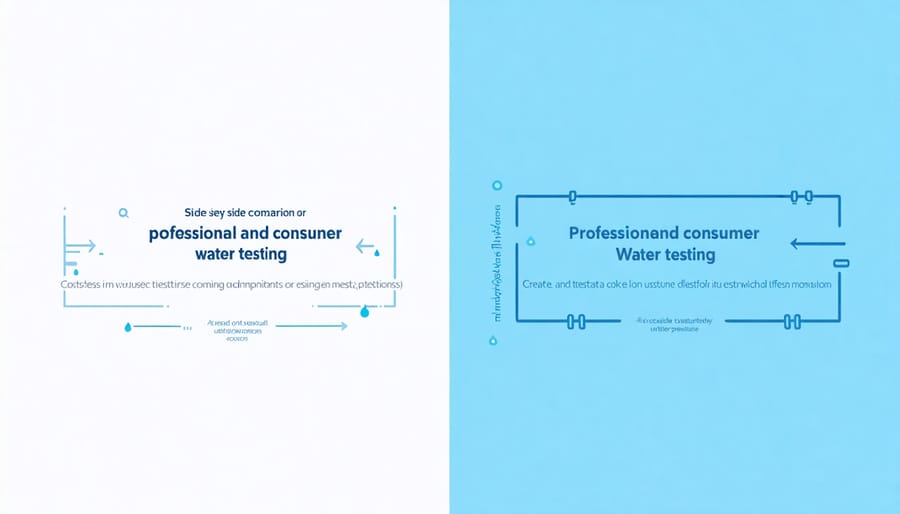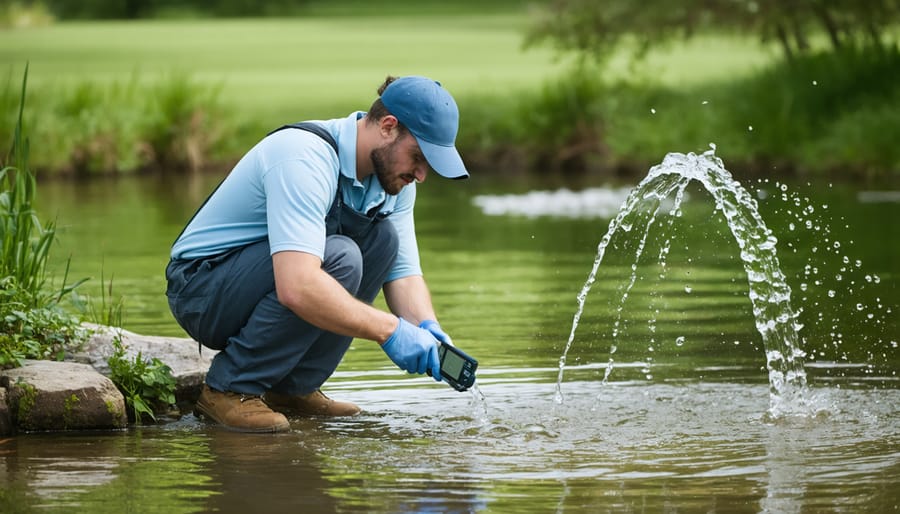
How Water Quality Labs Help Keep Your Pond Pristine: Inside the Occoquan Monitoring System
Discover how professional watershed monitoring techniques can transform your backyard aquatic ecosystem into a thriving, scientifically-managed water feature. The Occoquan Watershed Monitoring Laboratory revolutionized water quality testing by pioneering automated sampling methods that anyone can adapt for home use. Their groundbreaking approach combines round-the-clock monitoring with simplified testing protocols, making professional-grade water management accessible to pond owners. Whether you’re maintaining a small garden pond or overseeing a larger water feature, understanding these laboratory-proven techniques will help you achieve crystal-clear water and healthy aquatic life. By learning from one of the nation’s most respected water quality facilities, you’ll gain practical insights into maintaining optimal water conditions using straightforward, DIY-friendly methods that deliver professional results.
The Occoquan Watershed Laboratory: A Model for Water Testing

State-of-the-Art Testing Methods
The Occoquan Watershed Monitoring Laboratory uses several professional testing methods that pond owners can adapt for their own water features. One of the most valuable tools is the multi-parameter water quality meter, which measures essential factors like pH, dissolved oxygen, and temperature all at once. While professional models can be expensive, affordable handheld versions are available for home use and provide reliable readings for basic maintenance.
Water clarity testing, traditionally done with a Secchi disk in laboratories, can be replicated at home using a DIY version made from a weighted white plate attached to a measured rope. This simple tool helps monitor water transparency and algae levels effectively.
For chemical testing, the lab uses spectrophotometers to analyze nutrients and pollutants. Home pond owners can achieve similar results using water testing kits that include color-changing strips or liquid reagents. While not as precise as laboratory equipment, these kits are perfectly suitable for maintaining healthy pond conditions.
The laboratory also employs automated sampling devices for continuous monitoring. Home pond owners can adapt this concept by taking regular measurements at consistent times and locations, creating a valuable log of water quality changes throughout the seasons. This systematic approach, though simpler than professional methods, helps identify patterns and potential problems before they become serious issues.
Essential Water Quality Parameters for Your Pond
DIY Testing vs. Professional Analysis
While DIY water testing kits offer convenience and immediate results, they often provide just a snapshot of basic crucial water quality indicators. Think of it like checking your temperature at home versus getting a complete medical checkup – both are valuable, but serve different purposes.
Home testing is perfect for routine monitoring and catching obvious issues quickly. You can test pH levels, ammonia, and basic nutrients right from your backyard. These kits are affordable and give you a good baseline for day-to-day pond management.
However, professional laboratory analysis offers deeper insights that DIY kits simply can’t match. Labs use sophisticated equipment to detect subtle chemical imbalances, bacterial levels, and trace elements that might be affecting your pond’s ecosystem. They can identify specific algae species, measure dissolved oxygen with precision, and even detect emerging problems before they become visible.
For best results, consider combining both approaches. Use home testing kits for regular monitoring, but schedule professional analysis once or twice a year, especially during seasonal changes. This way, you’ll have the convenience of immediate readings while ensuring your pond receives thorough, expert evaluation when it matters most. Remember, catching problems early through professional testing often saves money and heartache in the long run.


Applying Professional Monitoring Techniques at Home
You can bring professional-level monitoring to your backyard pond with some simple yet effective techniques. Start by establishing a regular testing schedule, just like the pros do. Purchase a quality water testing kit that measures essential parameters like pH, ammonia, nitrites, and dissolved oxygen.
Create a logbook to track your measurements – this helps you spot trends and potential issues early. Take readings at the same time each day for consistency, preferably in the morning when oxygen levels are typically lowest. Remember that maintaining natural pond balance is crucial for a healthy ecosystem.
Consider investing in a digital thermometer for accurate temperature monitoring and a Secchi disk (or make your own with a white plastic lid) to measure water clarity. Place markers around your pond to establish consistent testing spots, mimicking the sampling stations used in professional labs.
For more advanced monitoring, collect water samples in clean glass jars and observe them for algae growth or unusual colors. Take photos of your pond weekly to document any visual changes. During rainfall, pay special attention to water runoff patterns and how they might affect your pond’s chemistry.
Keep your testing equipment clean and properly stored, and calibrate instruments regularly to ensure accurate readings. These professional practices, when applied consistently, will help you maintain a healthier pond ecosystem.
Regular water quality monitoring is a vital practice that benefits both professional facilities and home pond enthusiasts. As we’ve learned from the Occoquan Watershed Monitoring Laboratory’s methods, consistent testing and data collection are key to maintaining healthy water ecosystems. By implementing even basic monitoring routines in your own pond or water garden, you can catch potential issues early and maintain better water quality year-round.
Remember that you don’t need sophisticated laboratory equipment to start monitoring your water. Simple test kits and regular visual inspections can provide valuable insights into your pond’s health. Make it a habit to check basic parameters like pH, dissolved oxygen, and temperature at least monthly, and keep a log of your readings to track changes over time.
The success of professional monitoring facilities shows us that consistency and attention to detail make all the difference. Whether you’re managing a small backyard pond or a larger water feature, regular monitoring will help you create and maintain a thriving aquatic environment that you can enjoy for years to come. Start your monitoring routine today – your pond and its inhabitants will thank you for it!
